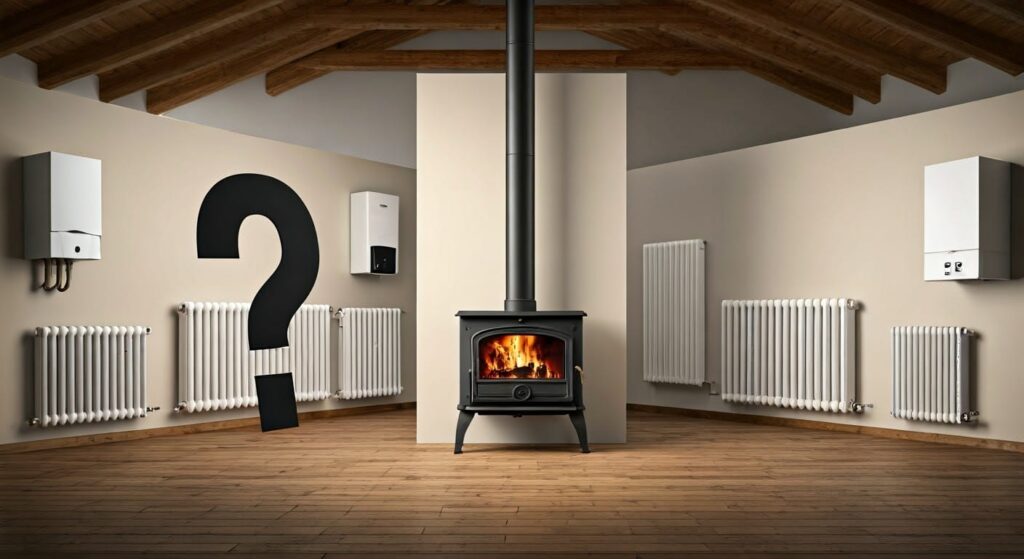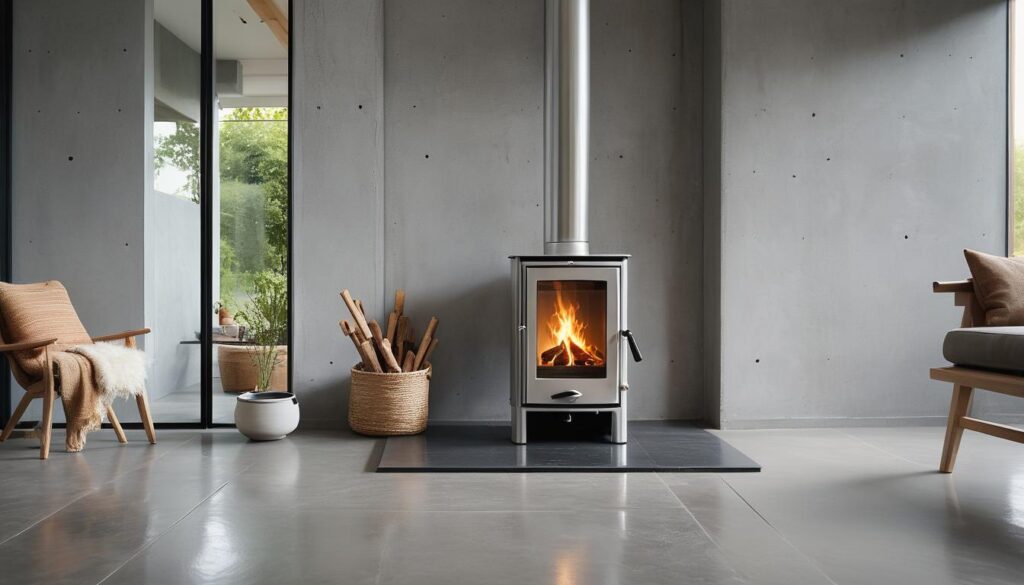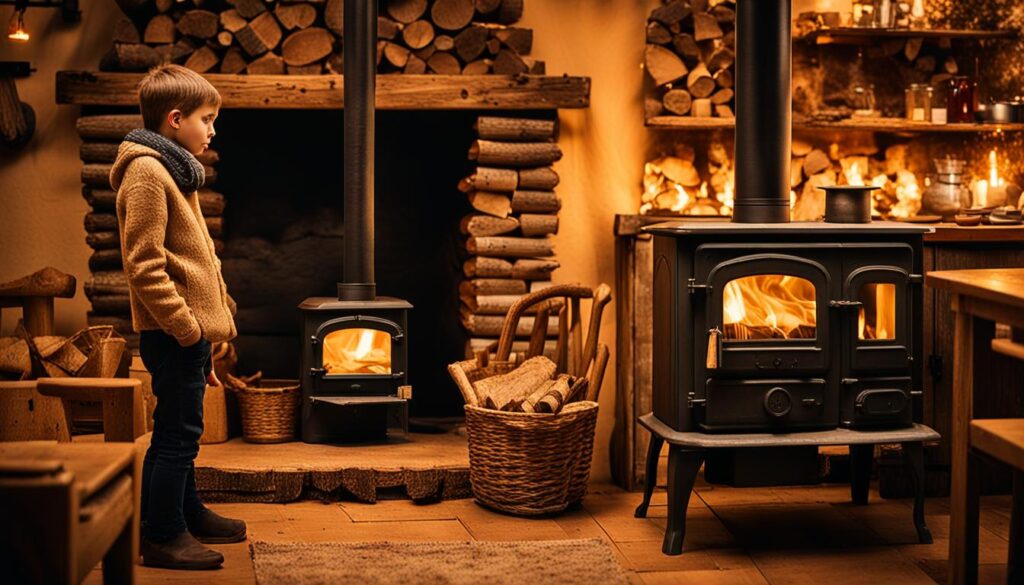
- Warmth, Sustainability, and Savings: Unlocking the Benefits of Wood-Burning Stoves
- The Current State of Sustainable Living
- The Economic Edge: Cost Savings and Stability
- Debunking Environmental Concerns: Sustainability and Emissions
- Efficiency Evolved: Modern Wood-Burning Stove Technology
- Comparison Head-to-Head: Wood Burning Stove vs. Other Heating Methods
- Maximizing Your Wood-Burning Stove Experience
- FAQs: Wood-Burning Stoves and Sustainable Heating
Warmth, Sustainability, and Savings: Unlocking the Benefits of Wood-Burning Stoves
As the world navigates the complexities of climate change, energy efficiency, and sustainable living, the humble wood-burning stove has emerged as a surprisingly modern solution for home heating. But what sets it apart from its gas, electric, and oil-fired counterparts? In this comprehensive guide, we’ll delve into the economics, environmental impact, and innovative technologies that make wood-burning stoves an attractive choice for the eco-conscious homeowner.
The Current State of Sustainable Living
With the global focus on reducing carbon footprints and mitigating the effects of climate change, homeowners are increasingly seeking eco-friendly alternatives for their daily needs. Heating, being one of the most significant energy consumers in a home, has become a key area of focus. Wood-burning stoves, with their unique blend of traditional charm and modern efficiency, are gaining popularity as a sustainable heating solution.
The Economic Edge: Cost Savings and Stability
The Importance of Sustainable Heating
- Reducing Carbon Footprints: Eco-friendly heating solutions play a crucial role in minimizing environmental impact.
- Energy Efficiency: Modern wood-burning stoves offer high efficiency ratings, reducing energy consumption.
- Cost-Effective: Long-term savings and stable fuel costs make wood-burning stoves an attractive economic choice.
| Heating Method | Initial Investment | Ongoing Costs | Potential Savings |
|---|---|---|---|
| Wood-Burning Stove | £800 – £2,000 | £100 – £300/year | High |
| Natural Gas Heating | £500 – £1,000 | £600 – £1,200/year | Medium |
| Electric Heating | £0 – £100 | £800 – £2,000/year | Low |
- Stable Fuel Costs: Unlike gas and electricity, wood fuel prices are less susceptible to market fluctuations.
- Long-Term Savings: With proper maintenance, a wood-burning stove can provide decades of cost-effective heating.
Debunking Environmental Concerns: Sustainability and Emissions
As the world shifts towards eco-conscious living, the wood-burning stove has found itself at the crossroads of environmental debate. Concerns about sustainability and emissions have led some to question the viability of wood-burning stoves as a green heating solution. But is the truth as clear-cut as it seems? In this section, we’ll delve into the heart of the matter, Debunking Environmental Concerns: Sustainability and Emissions, to uncover the facts behind the fiction and explore how modern wood-burning stoves are redefining the boundaries of eco-friendly heating.
- Carbon Neutrality: Wood is a carbon-neutral fuel source when sustainably sourced and burned efficiently.
- Reduced Particulate Emissions: Modern stoves, certified by organizations like the Stove Industry Alliance (SIA), minimize environmental impact.
Latest Development:
- The UK’s Clean Air Strategy (2021) acknowledges the improved emissions standards of new wood-burning stoves, encouraging their use as a cleaner alternative.
The Role of the Stove Industry Alliance (SIA) in Emissions Standards
- Setting Benchmarks: The SIA establishes strict emissions standards for wood-burning stoves.
- Certification Process: Ensures stoves meet or exceed these standards, providing consumers with eco-friendly options.
Efficiency Evolved: Modern Wood-Burning Stove Technology
Modern wood-burning stoves have undergone a transformative evolution, boasting efficiency ratings of up to 80%. Innovative designs, incorporating advanced materials and technologies, have significantly reduced fuel consumption and emissions. Brands like Clearskies are at the forefront, offering homeowners enhanced warmth, minimized environmental impact, and notably lower energy bills.
- High Efficiency Ratings: New stoves achieve efficiency rates of 80% or higher, significantly reducing fuel consumption and emissions.
- Innovative Designs: Brands like Clearskies incorporate advanced materials and designs for enhanced performance.
Health, Safety, and Air Quality: Mitigating Risks
- Proper Installation and Maintenance: Crucial for ensuring safety and minimizing emissions.
- Air Quality Monitoring: Especially important for households with respiratory issues.
Safety Tip:
- Always use dry, well-seasoned wood to reduce particulate emissions and ensure a safe burning experience.
Sustainable Forestry: The Biodiversity Bonus
Modern wood-burning stove users can now warm their homes while supporting the environment. Sustainable forestry practices ensure that wood fuel is sourced responsibly, maintaining healthy forests and promoting biodiversity. This harmonious balance allows homeowners to enjoy the cozy warmth of their stove, guilt-free, while contributing to a thriving ecosystem.
- Responsible Sourcing: Supports the maintenance of healthy forests and biodiversity.
- Local Sourcing: Reduces carbon footprint associated with transportation, further benefiting local ecosystems.
Comparison Head-to-Head: Wood Burning Stove vs. Other Heating Methods
| Criteria | Wood Burning Stove | Natural Gas Heating | Key Takeaways |
|---|---|---|---|
| Environmental Impact | Sustainable fuel sourcing, carbon-neutral | Dependent on fossil fuel, contributes to greenhouse gas emissions | Wood Stove: More Environmentally Friendly |
| Cost-Effectiveness | Long-term savings, stable fuel costs | Subject to fluctuating gas prices, potentially higher long-term costs | Wood Stove: More Economical in the Long Run |
| Efficiency Rating | Up to 80% efficient with modern stoves | Typically 80-90% efficient, but efficiency can vary | Comparable Efficiency |
| Fuel Source | Renewable, sustainable wood fuel | Non-renewable, fossil fuel-based | Wood Stove: Renewable Fuel Source |
Wood Burning Stove vs. Electric Heating
| Criteria | Wood Burning Stove | Electric Heating | Key Takeaways |
|---|---|---|---|
| Efficiency and Cost | Generally more efficient and cost-effective in the long run | Can be less efficient, potentially higher long-term costs | Wood Stove: More Efficient and Cost-Effective |
| Ambiance | Provides a unique, cozy atmosphere | Lacks the cozy ambiance of a wood stove | Wood Stove: Unmatched Ambiance |
| Operating Costs | £100-£300/year (dependent on wood costs) | £800-£2,000/year (dependent on electricity rates) | Wood Stove: Lower Operating Costs |
| Environmental Impact | Carbon-neutral with sustainable fuel sourcing | Dependent on electricity source, potentially high carbon footprint | Wood Stove: More Environmentally Friendly |
Maximizing Your Wood-Burning Stove Experience
- Choose the Right Stove: Select a modern, efficient model certified by relevant authorities.
- Regular Maintenance: Ensure your stove operates at its best for safety and efficiency.
- Sustainable Fuel Sourcing: Opt for locally sourced, sustainable wood fuel.
FAQs: Wood-Burning Stoves and Sustainable Heating
- Q: Are wood-burning stoves truly eco-friendly?
- A: Yes, when sustainably sourced and efficiently burned, wood-burning stoves offer a carbon-neutral heating solution.
- Q: How do I choose the right wood-burning stove for my home?
- A: Consider factors like efficiency ratings, sustainable fuel sourcing, and proper installation and maintenance.
- Q: Will wood-burning stoves replace my existing heating solution?
- A: Possibly, depending on your current heating needs and the benefits a wood-burning stove could offer your home.
- Q: What are the health and safety concerns with wood-burning stoves?
- A: Proper installation, maintenance, and sustainable fuel sourcing mitigate risks, ensuring a safe and eco-friendly heating experience.
- Q: How does a wood-burning stove impact my home’s biodiversity and local ecosystem?
- A: Responsibly sourced wood and local sourcing reduce the carbon footprint, benefiting local ecosystems and biodiversity.
- Q: Can I install a wood-burning stove in an urban area?
- A: Yes, but check local regulations regarding wood-burning stoves in urban areas and ensure you choose a stove that meets or exceeds emissions standards.
Conclusion: Embracing the Warmth of Sustainability
In the pursuit of sustainable living, the wood-burning stove stands out as a practical, eco-friendly, and cost-effective heating solution. By embracing the latest technologies, sustainable practices, and the unique ambiance it offers, homeowners can enjoy the warmth of their wood-burning stove, knowing they’re contributing to a greener future.


